バリ島・メランギット川 東南アジアのジャングルでのデイ・パックラフティング | パックラフト・アディクト #65
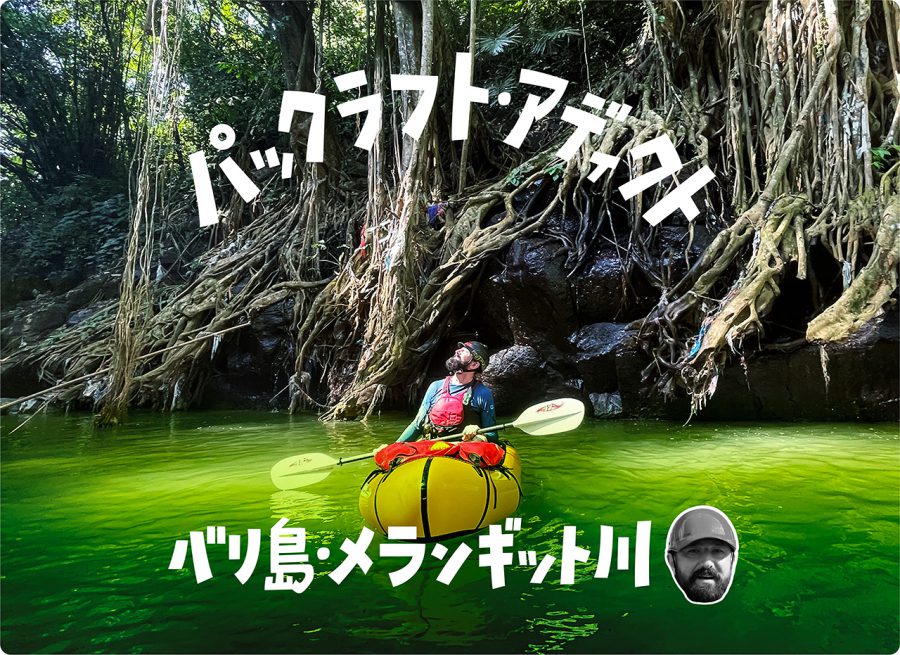
“Short but powerful”: Padding the Melangit River, Bali.
“Kort maar krachtig” is a Dutch saying , which literally means “short but powerful.” This is a perfect way to describe the start of my packrafting season this year. As luck had it, it was in Bali, Indonesia, where I was on a business for a week. And here is how it all happened.
Beginning of this January I got a chance to visit our partner university in Bali to work with a local colleague of mine on a minor that will be given there soon. In addition to practical convenience that this trip offered, I was eager to ditch the grey, cold, and dreary Dutch winter for the beauty of Balinese heat and sun. And of course, I wanted to take a packraft with me.

“But can you actually paddle in Bali?”- I asked myself. My initial internet search helped me to find only one mention of a short packrafting trip from early 2007. And, to my huge surprise, nothing else. Digging a bit deeper, I found that there are multiple rivers in Bali, three of which were used for rafting and, to a lesser extent, kayaking (for this they use inflatable PVC kayaks, which in some cases look more like mini-rafts). These rivers were the Ayung Rive near Ubud, the Telaga Waja River on the slopes of Mount Agung and the Melangit River in the Bakas Village area in the Banjarangkan district.
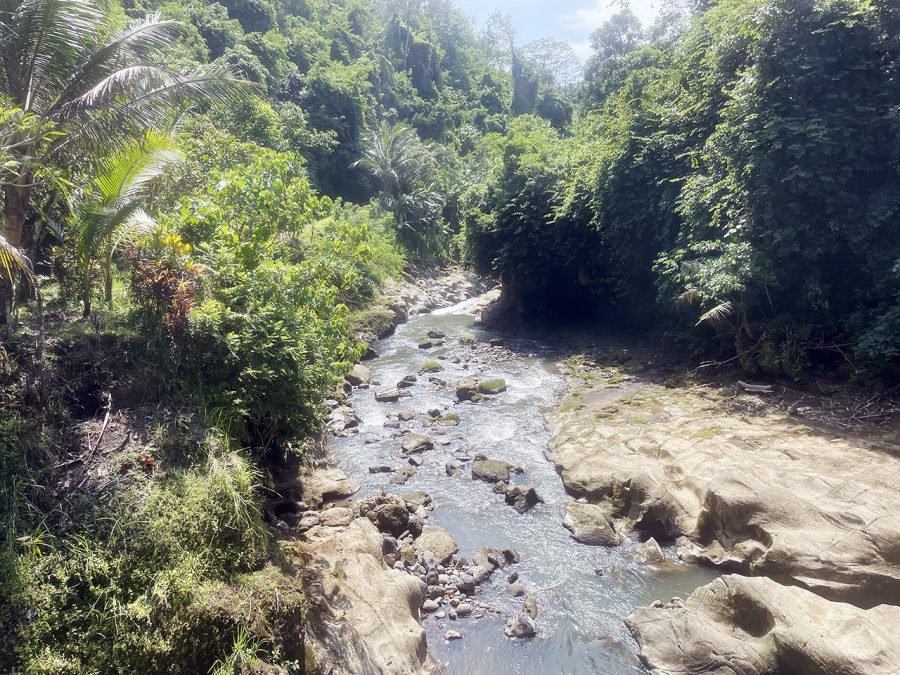
The Ayung River is probably the easiest (Class II-III), but at the same time the most famous one. A lot of rafting companies organize half-day trips on that river and you can find reference to it wherever you go (the only person who wrote about packrafing in Bali paddled this river as well). On the other hand, the Melangit River is probably the least known one of the three. But while the stretch used for paddling there is the shortest, there are numerous drops that make it the most difficult one (Class III-IV). And possibly the most exciting as well. At least that was what I personally thought as I got a chance to paddle both the Ayung and the Melangit Rivers.
However, here, I would like to concentrate on the latter, as it stole my heart. It was the “shorter, but more powerful” of the two, to paraphrase the Dutch saying. The fact that it was unplanned, might have played a role as well – whereas I organized the Ayung trip in advance, paddling the Melangit River was a last moment decision. It simply escaped my attention that my flight was later on Saturday night, which meant that I had an extra day for myself. I realized it only halfway through the week and I was glad that I could arrange the trip at all.
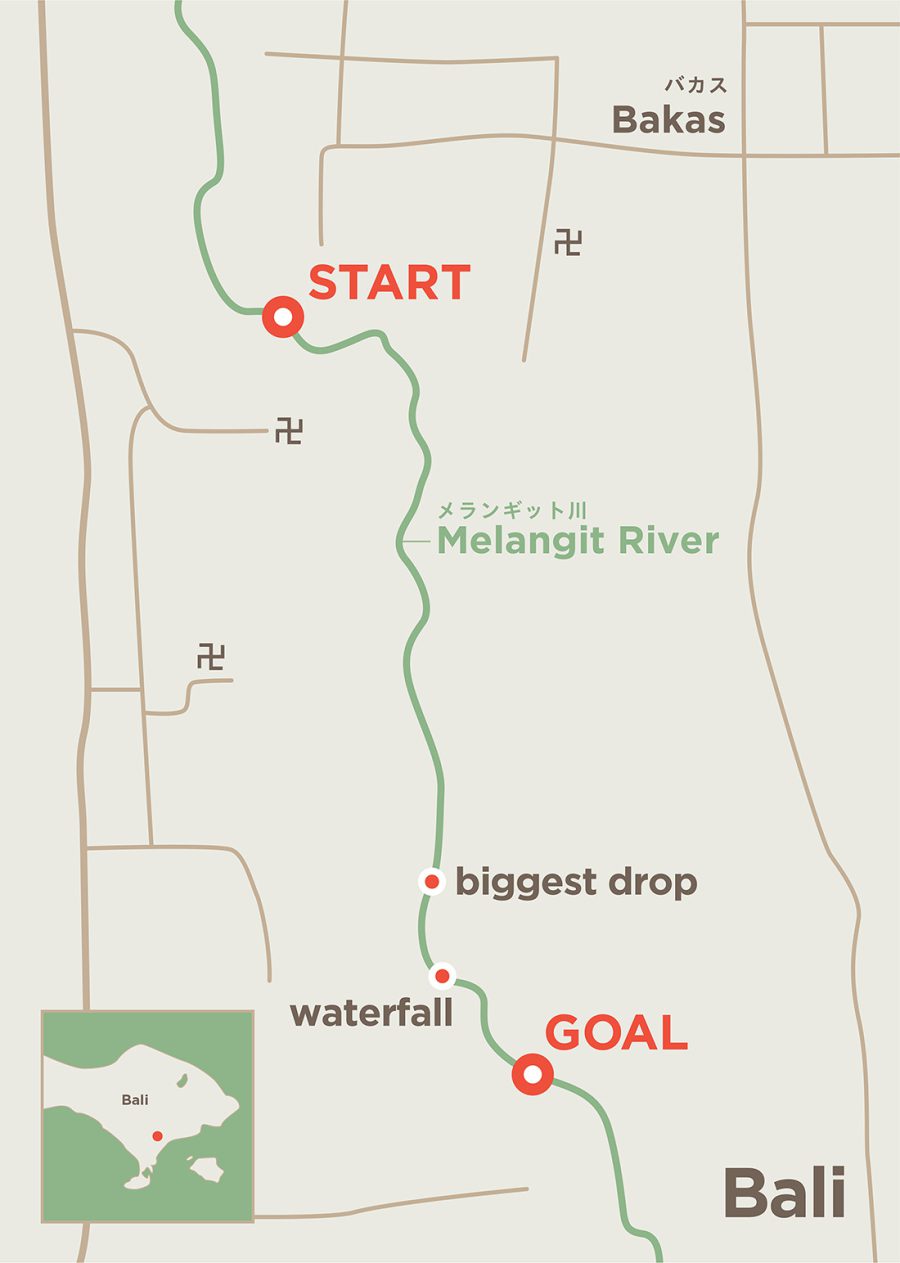
They say: “Never paddle alone.” This is especially true for white water and rivers that you do not know. And as I could not find anyone to paddle with (it seems that kayaking is not really developed in Bali – it is much popular in Java), I decided to join a guided tour, the same way I did on the Ayung River. (Usually I would not do that, but in this case it made sense.)
Having searched for companies that run tours on the Melangit, I came across the website in English of the company, Melangit Adventure, which claimed to offer the “one and only kayaking in Bali.” It sounded good and I contacted the owner through WhatsApp.
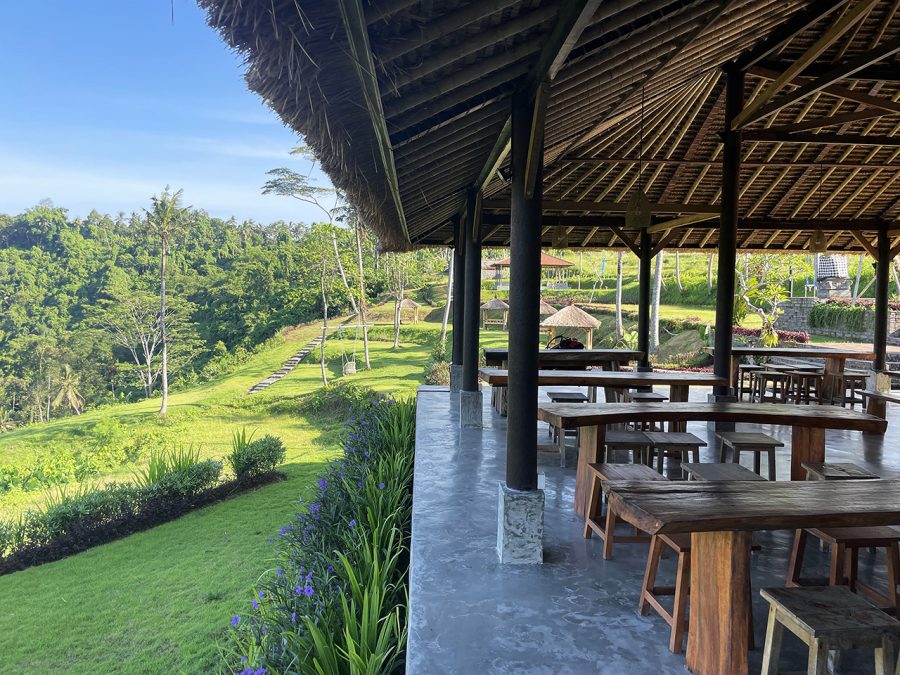
“Do you have tours on Saturday?” I asked. “And can I join in my packraft?” These were two questions the answers to which were not obvious. On the one hand, that Saturday it was Kuningan – one of the big religious holidays in Balinese Hinduism. On the other, not all companies were willing to let me join a tour in a packraft. At least that was my discovery when I tried to arrange the paddling trip on the Ayung.
Luckily, the answers to both questions were positive. So, we agreed on the price (IDR 950,000, which is around 60 Euro) and on the pickup time from the hotel. “One final question – how long does the whole thing take?” I asked, worrying if I had enough time to get back to the hotel before I had to leave for the airport. “It will take 6-7 hours.” This sounded good and so the trip was booked.
The package included the transportation from and back to the hotel, a welcome drink, a freshly cooked meal, and a ‘private’ guide (in my case, it even turned out to be two).

In addition when later I talked to the owner, who is locally known by his nickname Gede, and he told me that they mostly employed locals. Many of them had been impacted by the absence of tourists during the corona years. He himself had experienced that as well. Therefore, it is good to know that that money stays within the local community.
On Saturday morning, I was picked up at 7:00 am as planned. It took us around 1 hour and 20 minutes to get from the hotel to the location of the company, which seemed to be rather fast. At first there was almost no traffic (which I thought was not possible in Bali), but the further we went, the busier it became. “People are returning to their villages for the Kuningan celebrations,” the driver explained to me.
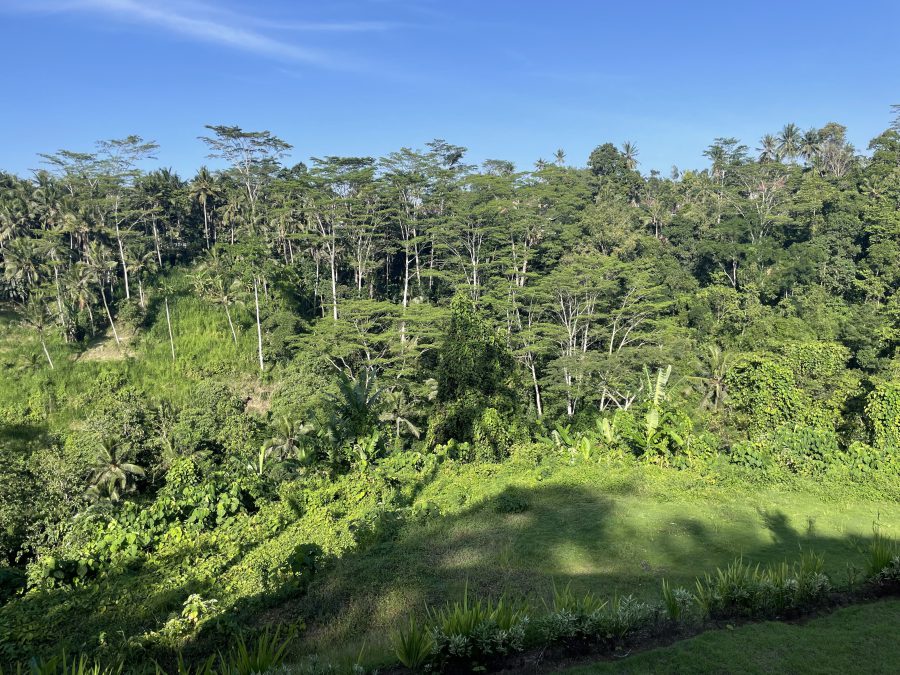
The Melangit Adventure company is located on the outskirts of the village at some terraced fields above the Melangit River gorge. On one side of it was a roofed terrace with a kitchen, a bar and a great view over the jungle on the other side of the river.
The place looked new. “We have been only opened for 7 months,” I was told by the girl who served me a welcome drink. (I went for some bottled water.) “Once you are ready, you can change and go down to the river with the guide,” she pointed at a man who was waiting for me.
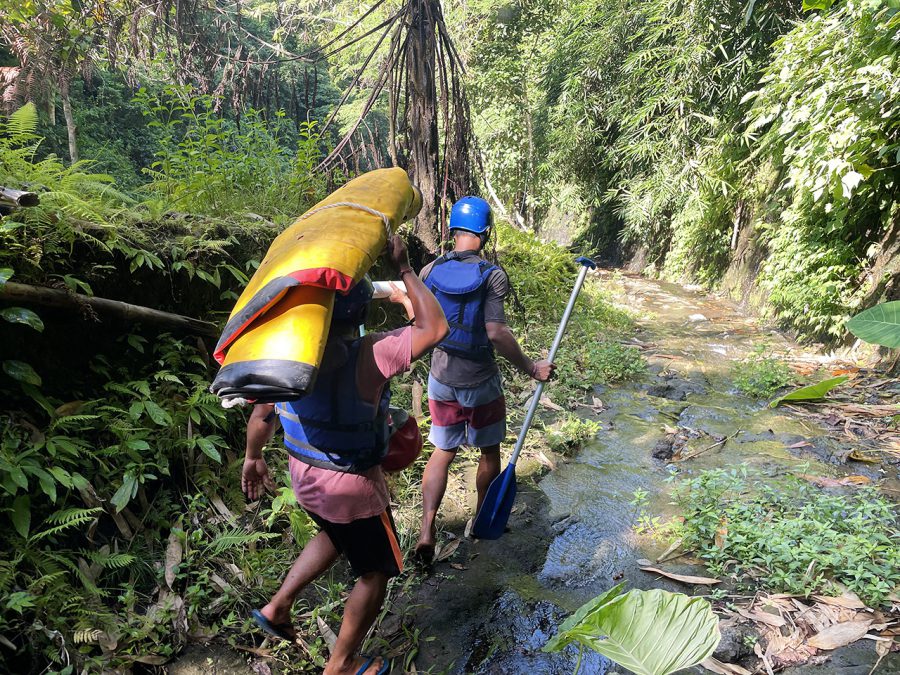
The hike down to the river took us about 10 minutes. At first we walked down some paved steps, which soon gave way to steps cut in the side of the hill. At times it was a bit slippery, but on the whole the walk was fine. One of the guides, who introduced himself as Made (Balinese for a second-born), carried a rolled-up self-bailing PVC kayak. The other guide, Wayan, carried a single-bladed rafting paddle.
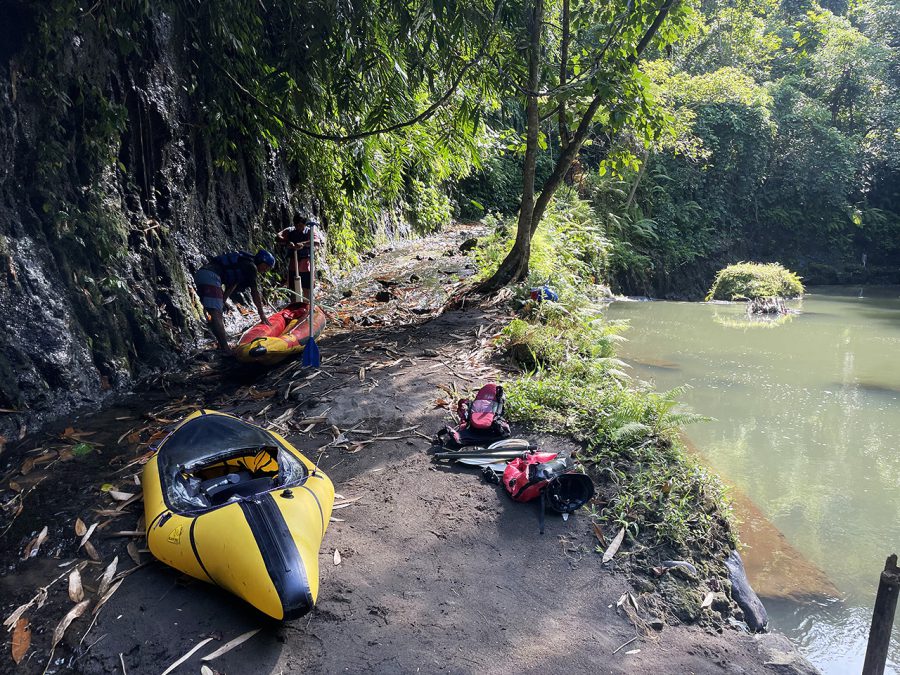
Once at the river, they took out a large hand-pump that was hidden in the bushes and started to inflate their boat. I used a small electric pump to inflate my packraft. At this point I confirmed my vague feeling that something was missing – I could not find my sprayskirt. (As it turned out later, I must have left it at the Ayung river six days prior.) Not having it was not optimal and, for a second, I even entertained an idea of joining them in a kayak (you can have up to 4 people in it). Luckily I chased this idea away. I would just need to empty my packraft more often. And that is exactly what I had to do.
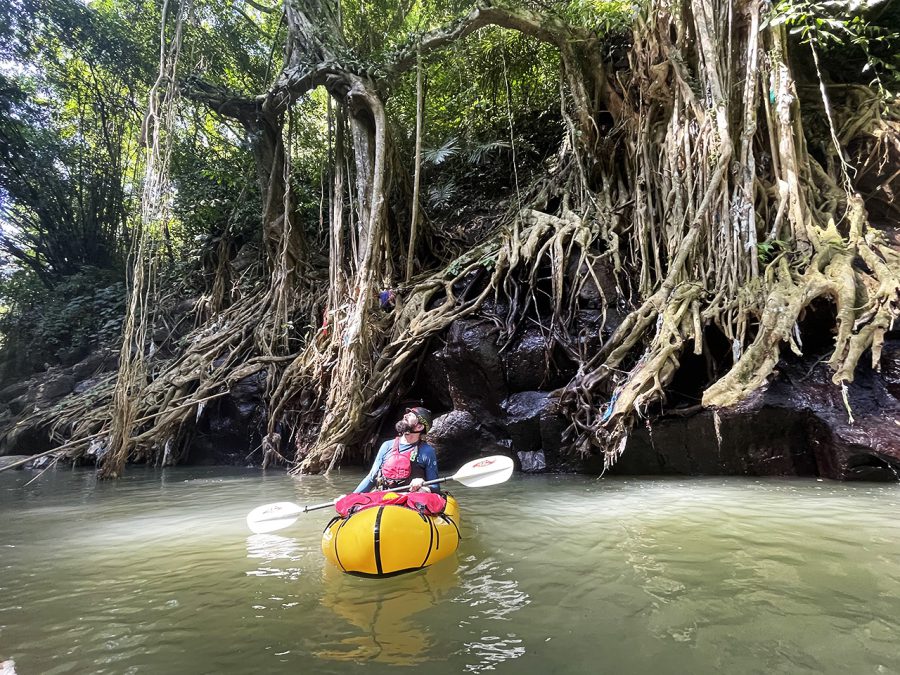
Both Made and Wayan are locals and come from the Bakas Village. For over a decade they had worked as rafting guides on this river, but working with kayaks was relatively new for them. Because of that they knew the area like the back of their hand. “With the rafts we start higher up,” they told me. “This place is about half-way down.”
Late on, I found out that it might not even be half-way, as the rafting stretch, as described on the internet, is nearly 8 kilometers with 37 drops. The stretch we paddled was much shorter. I calculated that it was only 1.5 km. And there were around 10 rapids, out of which 5 were proper drops. Still while few in number, they were really fun ones – short but powerful (and 5 drops more than in the whole of the Netherlands).
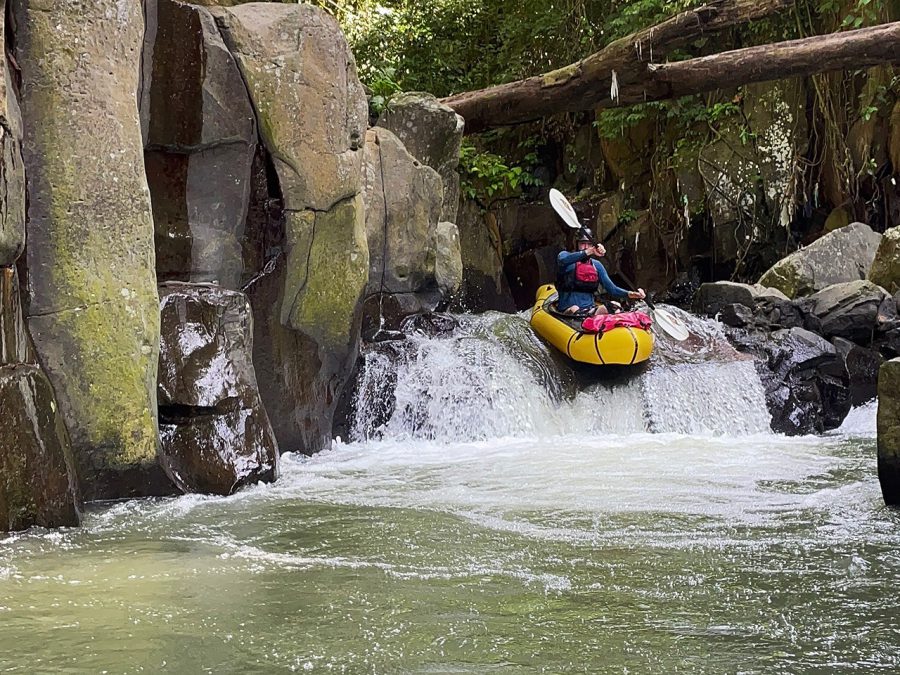
In addition, the river was spectacular. I always love gorges, and the Melangit is just that – a spectacular gorge cutting through a jungle with multiple waterfalls along the way. The water level was perfect as well. As it was wet season, and the weather forecast promised lots of rain the day before, I was afraid that it would be too much water for me to handle. Luckily, the forest was not accurate and though it rained a bit, it was nothing like the deluge they were promising.
The first rapid was an artificial slide with a drop at the end. “Please paddle right. Left there is a stone and if you hit it you do this,” Wayan told me imitating an overturning boat with a palm of his hand. I followed his advice and did not flip.
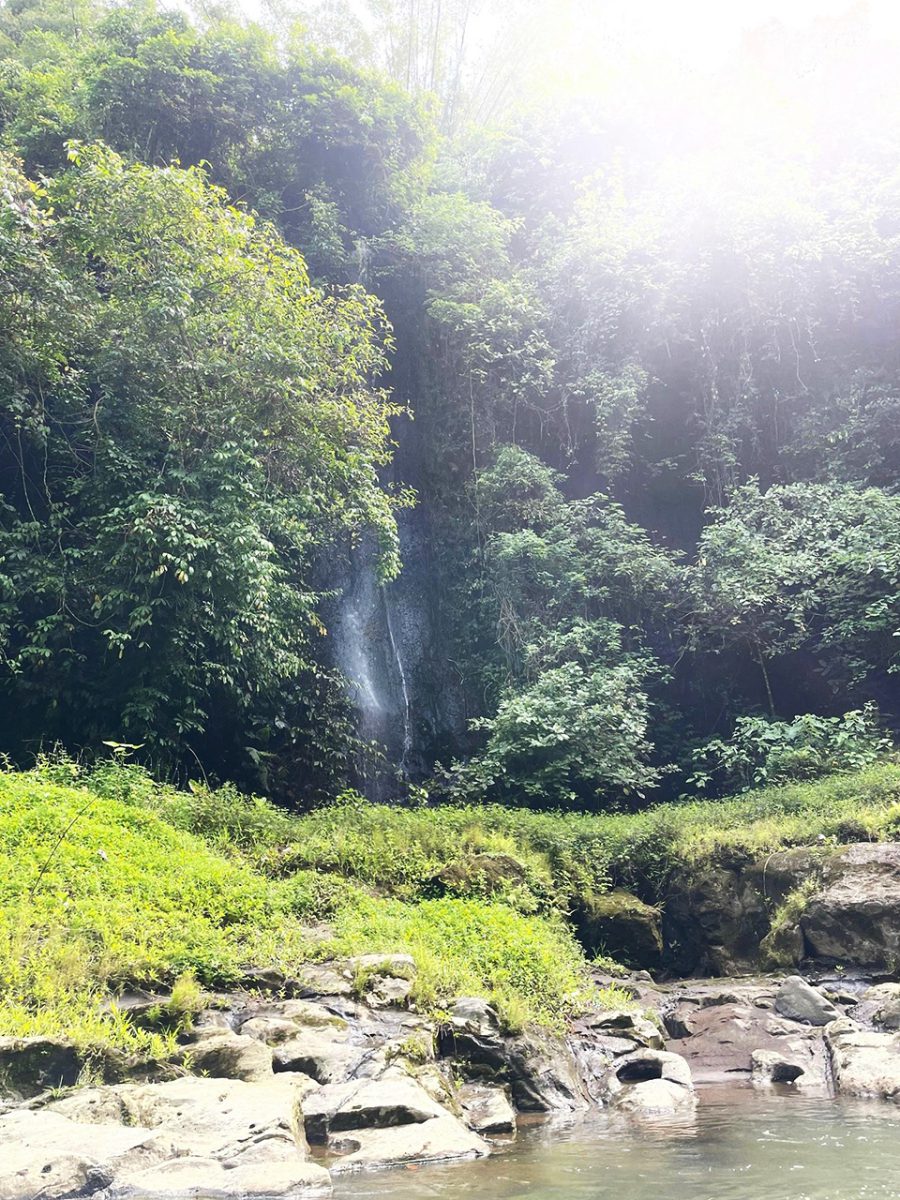
Several more times they guided me like that and it all went fine. One time, they stepped out, took out their kayak and Made ‘walked’ though the rapid, while Wayan was securing him. When asked if I needed to do the same, they explained that a week before there had been some obstacle in the water and they were checking if it was still there. It was not, which meant that I could run the drop safely.
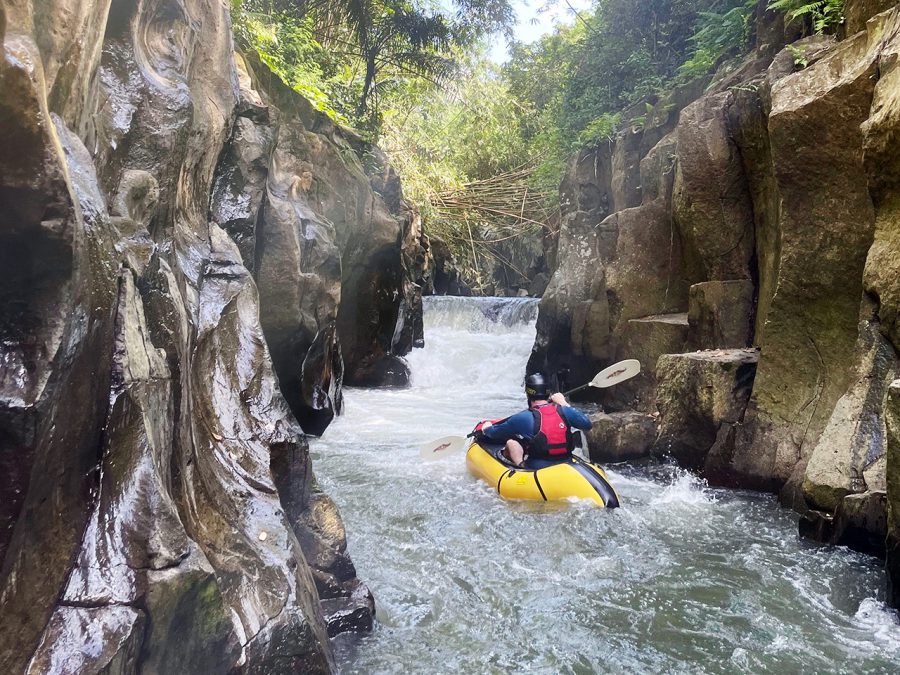
As I did not have a sprayskirt, I had to stop and empty the packraft a few times. Once, after an especially large drop, it was filled to the top – I felt like I was paddling in a bathtub. To be honest, I expected to capsize at least once. But I did not, which, I think might partially be because I was getting a lot of water into the boat. It made the packraft heavy and ‘sticky’.
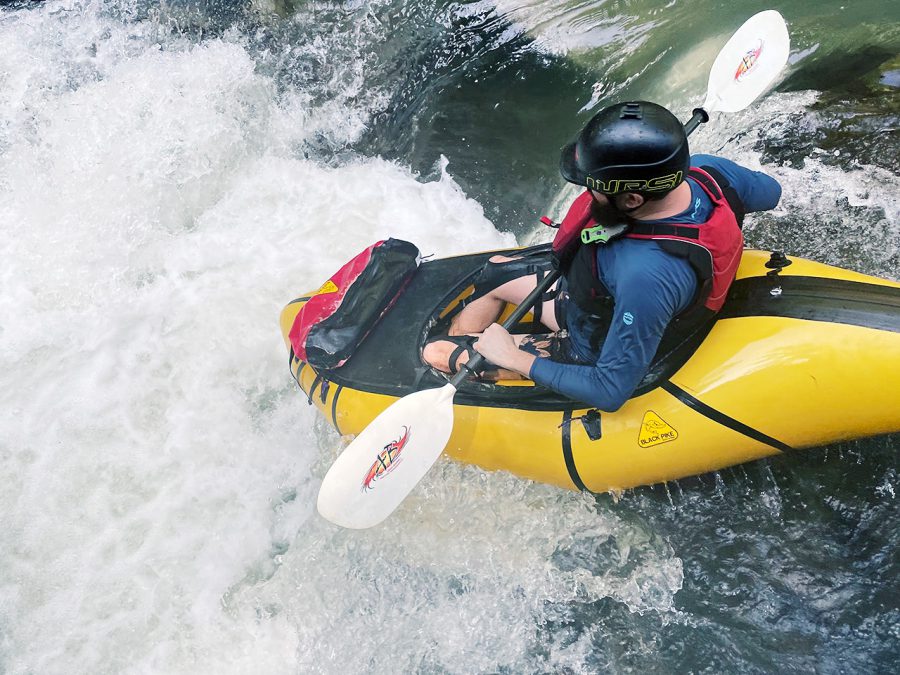
After about an hour, which felt a lot longer though, we got to the end of the trip. Thus this was probably the shortest packrafing microadventure that I have had. Our driver and his son were already waiting for us. They were wearing traditional Balinese dresses. From what I understood, they had attended the Kuningan ceremony at a temple earlier that day.
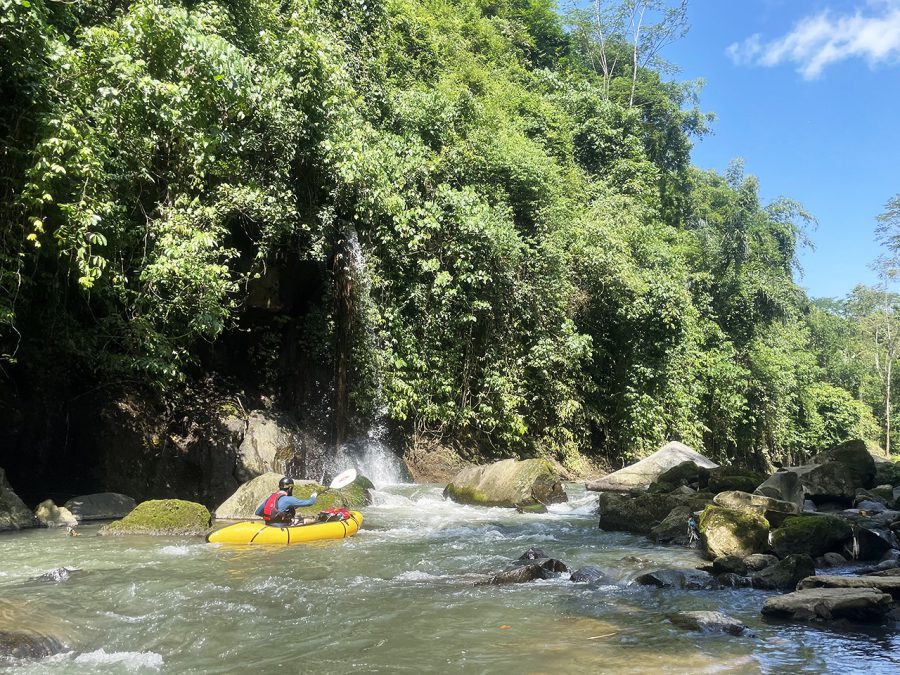
After a short walk up to a dam blocking the river, we loaded our boats on the back of a small truck, climbed into it ourselves and had a 15 minute ride back to the starting point. There I got a lovely meal that was specially cooked for me. “Not spicy, please” I asked as I did not want to tempt my fate just before going back home.
After a short talk with the owner, I was taken back to the hotel, where I arrived exactly 7 hours after the pick up that morning, just as promised and well in time for the flight.
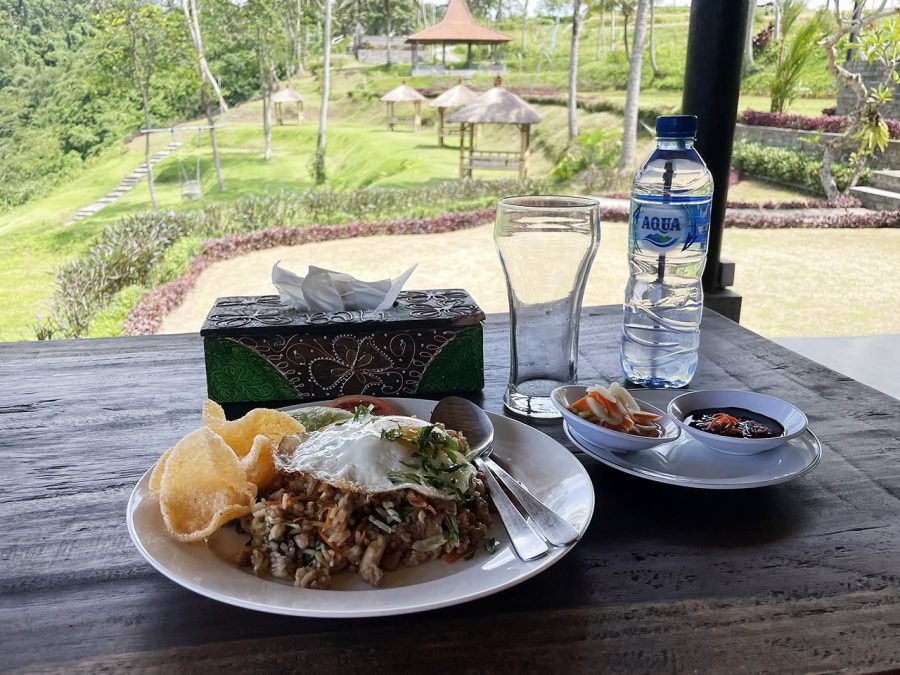
And so, this short but powerful packrafting microadventure finished. It was both fun and a great way to start a new paddling season. I wish it could have been a bit longer as I really enjoyed the river. And as I have already had the shortest trip, I hope that this year will bring some long trips as well.
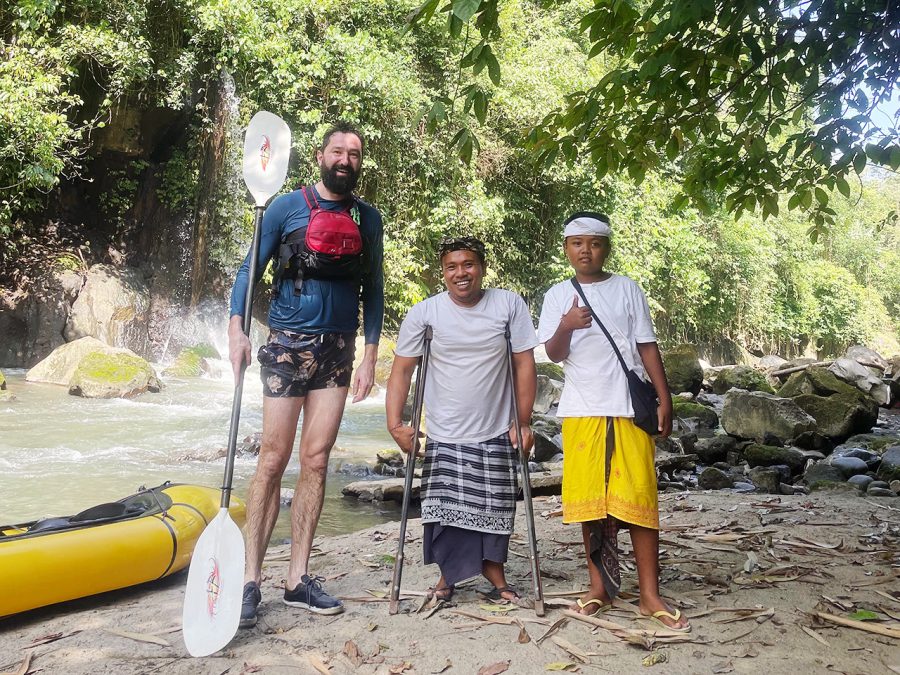
- « 前へ
- 2 / 2
- 次へ »
TAGS:

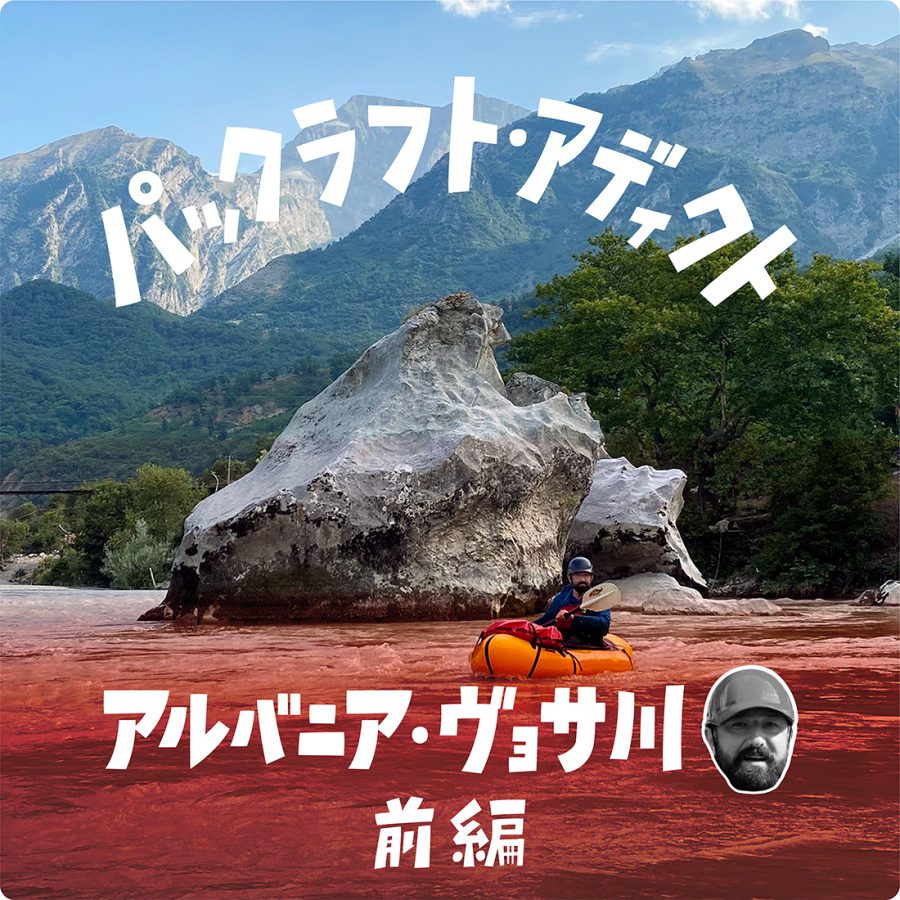
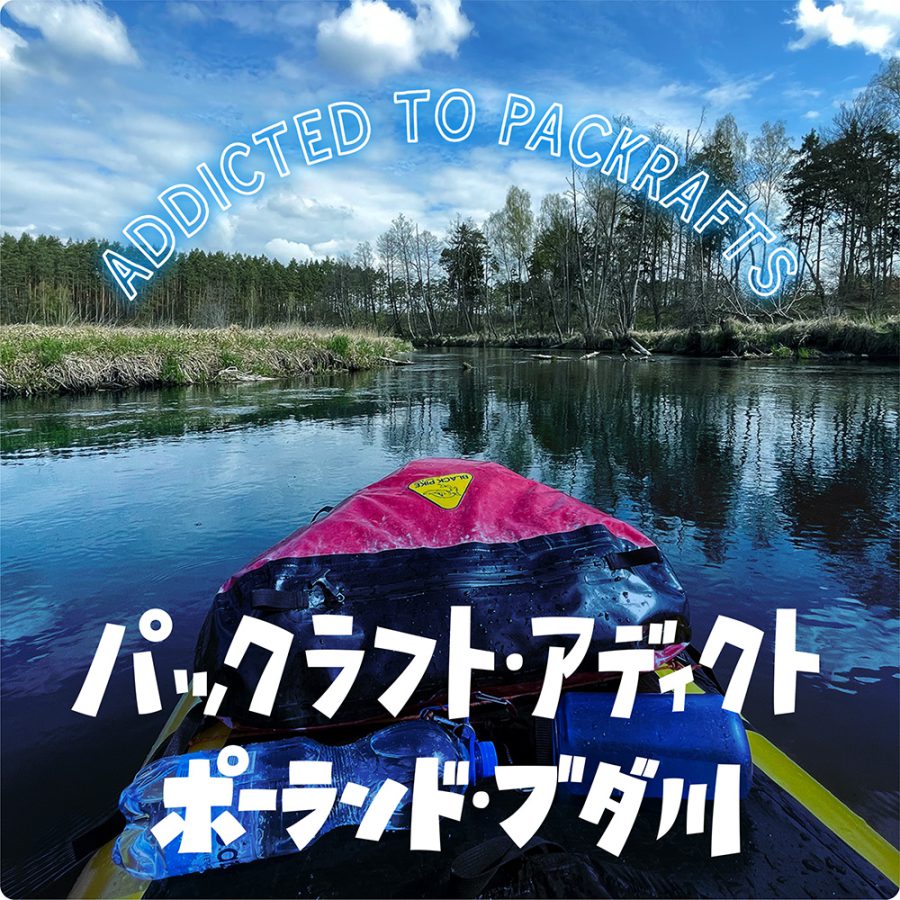
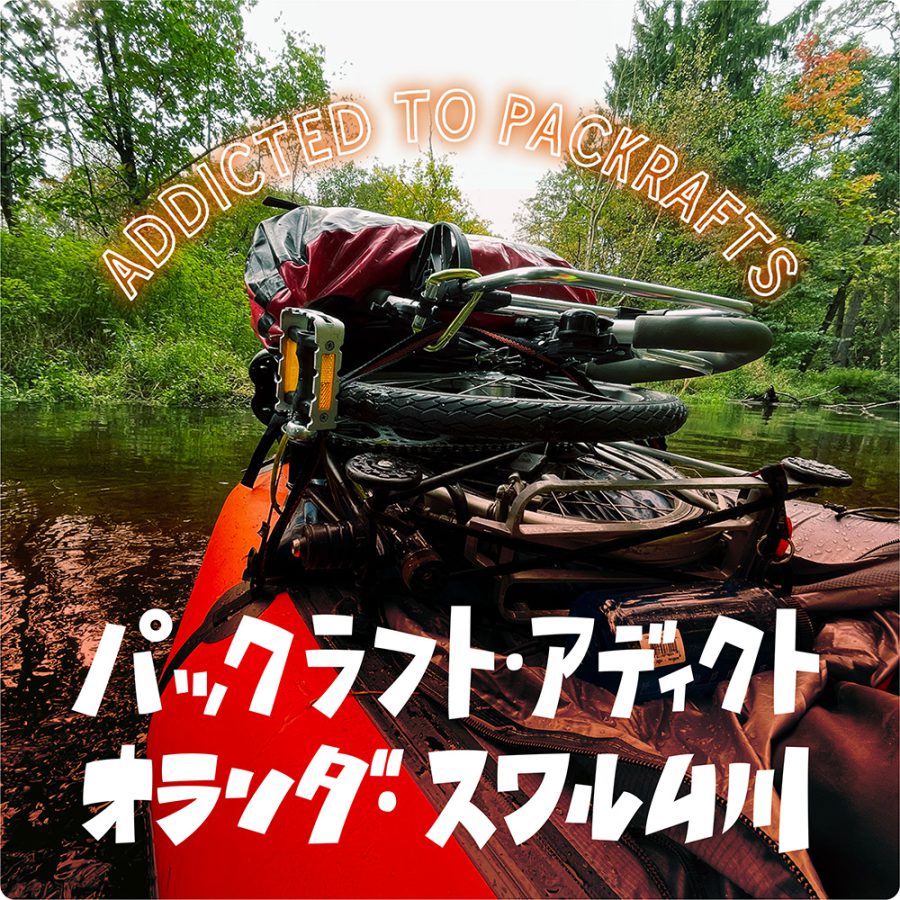










 ULギアを自作するための生地、プラパーツ、ジッパー…
ULギアを自作するための生地、プラパーツ、ジッパー…  ZimmerBuilt | TailWater P…
ZimmerBuilt | TailWater P…  ZimmerBuilt | PocketWater…
ZimmerBuilt | PocketWater…  ZimmerBuilt | DeadDrift P…
ZimmerBuilt | DeadDrift P…  ZimmerBuilt | Arrowood Ch…
ZimmerBuilt | Arrowood Ch…  ZimmerBuilt | SplitShot C…
ZimmerBuilt | SplitShot C…  ZimmerBuilt | Darter Pack…
ZimmerBuilt | Darter Pack…  ZimmerBuilt | QuickDraw (…
ZimmerBuilt | QuickDraw (…  ZimmerBuilt | Micro Pack …
ZimmerBuilt | Micro Pack … 














